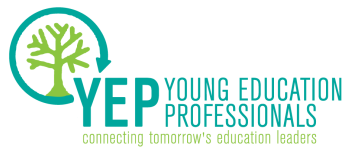 Credit: Ravenwerks.com
Credit: Ravenwerks.com D.C. is the only jurisdiction in the country that allows charter schools to serve adult populations, meaning that a school like mine — which provides both GED and ESL (English as a Second Language) courses to disconnected youth ages 16-24 — can be fully funded on public dollars. This also includes schools like Carlos Rosario that serves adults of all ages. Because so many of the adults in need of these programs are likely to have children as well, perhaps the most promising models are the family literacy programs where adults with young children can attend school and learn together. A good example of this is Briya Public Charter School, where adult immigrants can learn English, computer skills, parenting, and civic skills while their children attend preschool in the room next door. It’s a holistic approach to tackling the underlying class issues and breaking the cycle of under-education.
While most states prohibit per-pupil funding for adult education, arguing that it drains money from the K-12 system, some state laws are simply silent on the matter. In Indiana, for example, the Excel Charter Schools, run by Goodwill, acquired state funding for their adult “recovery” programs since the state did not specifically ban the use of charter funds for adult education. This, however, triggered the state assembly to reconsider adult funding amid fears that it would divert too much money away from K-12 and put a strain on state finances. In Texas, where Goodwill would like to start similar adult education schools, state law only finances charter schools with students under the age of 26.
“Why do we give up on somebody when they turn 25?” Traci Berry, the vice president of development for Goodwill in Central Texas, asks in the Texas Tribune. “We want people to still be educated, we want to prepare them for life, we want to give them the training and the skills, to be able to say here they are, able to contribute.”
In California the state charter laws regarding funding for adult education are so narrow that prison programs that aim to transition inmates back into society are some of the only ones given public dollars for adult education. Legislators in Florida, where concerns also center on the impact to K-12, have also fought for adult charter funding.
We cannot see this as a zero-sum game where if adults win, children lose or vice versa. The truth is that for states, funding adult education nearly pays for itself. The state of Utah, for example, found that by appropriating $9 million in adult education in 2011-12, it provided education services to 21,005 adults. Of those students, 4,047 earned their GED or adult education diploma, yielding each graduate an average earning potential of $33,695, which is expected to result in an extra $7 million in tax revenue. (Imagine the return on investment with a higher success rate and more widespread adoption.) The bottom line: The revenue needed to make this investment won’t put states in the hole — only inaction will do that.
To think that students like mine and so many more adults who may not have the money to pay for education — but have the drive and dedication to contribute more to society and build themselves a better life — wouldn’t have this chance if they were anywhere outside of D.C. is tragic. It’s time for states to take action to ensure full per-pupil funding for adult education within the charter system. So what can you do to make it happen? Lobby your representatives, write a letter, share this blog post, and the next time the conversation turns to the importance of early childhood education, remind your friends, family, and colleagues not to leave adults behind.
Scott Goldstein is a social studies and ESL teacher at a D.C. public charter school. He can be reached via email or Twitter.

 RSS Feed
RSS Feed